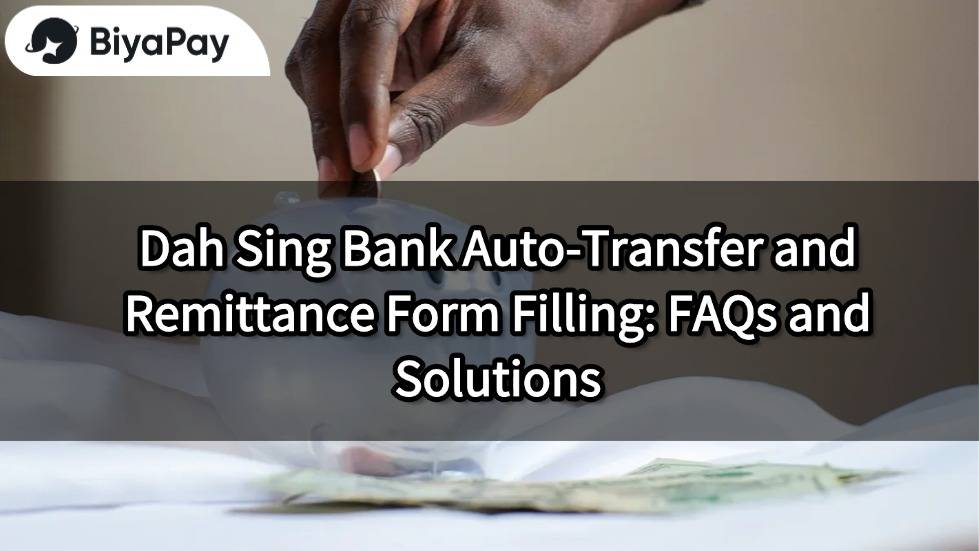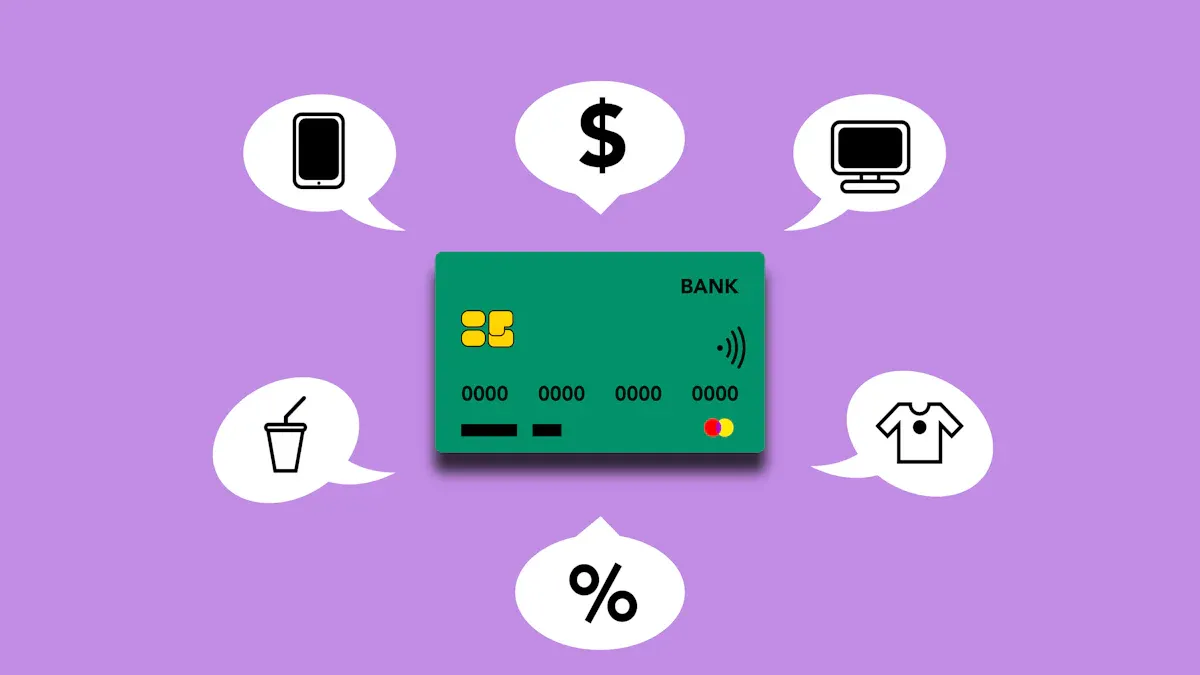- EasyCard
- Trade
- Help
- Announcement
- Academy
- SWIFT Code
- Iban Number
- Referral
- Customer Service
- Blog
- Creator
Dah Sing Bank Auto-Transfer and Remittance Form Filling: FAQs and Solutions

Image Source: pexels
When filling out the Dah Sing Bank auto-transfer and remittance form correctly, please use block English letters and a single-color ballpoint pen, ensuring all information is clear. You can download the form from the online banking platform, with different channels for individual and corporate clients. Remember to include the Dah Sing Bank code. If you have any questions, refer to the end of this document or contact the bank.
Key Points
- When filling out the Dah Sing Bank auto-transfer and remittance form, you must use block English letters and a single-color ballpoint pen, accurately completing all details, including personal and payee information, Dah Sing Bank code, amount, and purpose, ensuring clarity to avoid delays or failures.
- Common errors such as incomplete information, incorrect bank codes, mismatched signatures, and incorrect amounts can lead to application rejection or processing delays. Carefully verify all fields before submission, ensuring consistency with bank records to minimize errors.
- In case of questions or emergencies, you can check application progress via the online banking platform or seek assistance by calling or visiting a branch. Proactive inquiries and timely error corrections can speed up processing and ensure fund safety.
Filling Process

Image Source: pexels
Preparation
Before starting to fill out the Dah Sing Bank auto-transfer and remittance form, you should first prepare all required information. This includes your personal details, payee information, bank account number, amount (in USD), Dah Sing Bank code, and purpose statement. You must use block English letters and a single-color ballpoint pen to fill out the form, ensuring every piece of information is clear and accurate. This can reduce the chance of errors and improve processing efficiency. According to statistical process design principles, the more complete the data preparation, the higher the accuracy of subsequent processing.
Form Selection
You can choose the appropriate form based on your needs. Individual clients can obtain the form from the Dah Sing Bank online banking platform or by visiting a branch in person. Corporate clients can access it through the DS-Direct platform. Selecting the correct form helps the bank process your application quickly. Form design emphasizes logical sequence and clarity, and these design principles, validated by statistical data, can effectively improve filling accuracy.
Submission Methods
You can choose to submit the form in person at a branch or upload the completed form via the online banking platform. Corporate clients can submit directly through DS-Direct. The reliability of different submission methods can be reflected through system response time, availability, and security indicators. Online submission is typically faster, with the system providing instant feedback and ensuring data security. You can select the most suitable submission channel based on your needs.
Field Filling
Applicant Information
You need to accurately fill in your name, contact phone number, ID number, and bank account number on the form. This information must be fully consistent with your records at Dah Sing Bank.
In resumes or CVs, using specific numbers and charts can provide accurate and easily assessable information. For example, you can change “completed a large number of monthly transactions” to “completed over 3,500 transactions monthly”. This approach avoids subjective exaggeration and showcases real achievements through specific data. When filling out applicant information, you should maintain the same level of accuracy, enabling the bank to quickly verify details and reduce processing time.
Tip: If you have changed your contact phone number or ID number, please update your bank records first to ensure consistency.
Payee Information
You must fill in the payee’s name, bank name, account number, and contact information. This information directly affects whether the remittance can be completed successfully.
According to statistics from Hong Kong banks, reasons such as mismatched payee account and name, incorrect account numbers, or closed accounts account for approximately 40% of total refund or transfer cases. This indicates that accurately filling in payee information can significantly reduce the chances of refunds or transfers, improving remittance success rates. Some bank systems can now automatically verify payee information within 10 seconds, further enhancing efficiency.
Suggestion: Verify all details with the payee before filling out to avoid delays due to minor errors.
Dah Sing Bank Code
When filling out the form, you must correctly enter the Dah Sing Bank code. This code is key to identifying the account and processing transfers.
The Dah Sing Bank code typically consists of three digits, such as “040”. You can check the correct code on the official Dah Sing Bank website or at a branch.
If you enter the wrong Dah Sing Bank code, the bank may be unable to process your transfer instruction or may even return the funds, causing unnecessary delays.
You should carefully verify the Dah Sing Bank code each time you fill out the form, ensuring it matches the requirements of the recipient bank.
In some cases, such as cross-border remittances or specific types of auto-transfers, the Dah Sing Bank code is also required, making it particularly important to pay attention.
Note: If you are unsure about the Dah Sing Bank code, immediately consult bank staff to avoid transfer failures due to code errors.
Amount and Currency
You need to clearly fill in the transfer or remittance amount on the form and specify the currency (e.g., USD).
Accurately filling in the amount and currency directly impacts transaction accuracy:
- In GA4 reports, incorrect amounts or currencies can lead to transaction data errors, affecting report interpretation and revenue analysis.
- Refund events require correct filling of transaction_id, currency, and value parameters to ensure the refund event matches the original purchase event, avoiding revenue data distortion.
- GA4 offsets the revenue from purchase events with the refund amounts from refund events, presenting the correct net revenue.
- It’s recommended to use the “E-commerce Purchase Count” metric to avoid misreading transaction volumes due to refund events, ensuring data authenticity.
When filling in the amount, avoid extra symbols or decimal point errors. The currency unit must match the actual transaction, especially when involving USD, where you should refer to the day’s exchange rate.
Purpose and Remarks
You should briefly and clearly state the reason for the transfer or remittance in the purpose and remarks fields, such as “payment for goods,” “salary disbursement,” or “family support.”
Accurately filling this field helps the bank and payee quickly identify the source of the funds, also facilitating future account reconciliation.
Taking UTM parameter management as an example, correctly filling each field (e.g., Campaign ID, Source, Medium, Name, Content) allows precise tracking of advertising effectiveness.
You can refer to the following practices:
- Different expressions in EDM promotional copy (e.g., three days left, buy one get one free) can be tracked via the Content field to determine which copy is more appealing.
- Different buttons on an ad page (header, side, inside) can be set with different Content parameters to analyze user click preferences.
- It’s recommended to use English, avoid special symbols, and maintain consistent capitalization to ensure data can be correctly parsed.
- It’s suggested to create a management table and dropdown menu to reduce input errors.
When filling in the purpose and remarks, keep it concise and clear, avoiding vague or irrelevant descriptions.
Authorized Signature
You must sign in the designated area of the form, ensuring the signature matches your bank records. The bank uses your signature as the authorization basis, and if it doesn’t match, the bank has the right to reject the application.
You should use a single-color ballpoint pen to sign and keep the signature clear.
If you are a corporate client, an authorized representative must sign, and a company stamp should be affixed if applicable.
Before signing, you should double-check all information to ensure accuracy, reducing delays due to signature issues.
Tip: If you’re unsure about the signature on record with the bank, visit a branch in person to check or update it.
Common Errors

Image Source: pexels
When filling out the Dah Sing Bank auto-transfer and remittance form, you may encounter the following common errors. These errors not only delay processing but may also lead to transaction failures. You should pay special attention and contact the bank promptly to address any errors.
Incomplete Information
If you omit important details such as name, account number, or amount, the bank cannot process your application.
Common examples include failing to fill in the contact phone number, missing payee information, or omitting the purpose statement.
According to data analysis, incomplete information can lead to errors in subsequent data analysis, even preventing the analysis of average order value and transaction frequency, impacting decision-making.
You should double-check all fields before submission to ensure every piece of information is completed.
- Inconsistent data formats (e.g., mixed date formats) can make it difficult for systems to recognize.
- Missing amounts or transaction times can affect transaction records.
- Obvious errors (e.g., negative amounts) may lead to bank rejection.
Bank Code Errors
If you enter the wrong Dah Sing Bank code when filling out the form, it may result in confusion over the bank name.
In some cases, the system may display multiple bank names, making it difficult to confirm the correct financial institution.
Although this error typically doesn’t affect transfer transactions, you should proactively check the correct Dah Sing Bank code to avoid confusion.
You can query the correct code through the bank’s website or the Financial Information Service Co., Ltd.
Mismatched Signature
If your signature does not match the bank’s records, the bank will reject your application.
This issue is most common when signatures are changed or a company replaces its authorized representative.
You should confirm that your signature matches the bank’s records before signing, and corporate clients should affix a company stamp if applicable.
Tip: If you’re unsure about the signature on record with the bank, visit a branch in person to check or update it.
Incorrect Amount
If you enter the wrong amount, such as adding an extra zero or using the wrong currency unit (e.g., USD), the bank may reject the transaction or result in an amount mismatch with the actual transaction.
This can affect your financial records, potentially causing refunds or duplicate processing.
You should carefully verify each digit and currency unit when filling in the amount, ensuring consistency with the actual transaction.
- Wang Chaoqun notes that a lack of standard operating procedures can lead to frequent minor errors, severely impacting operational efficiency.
- Incorrect entries increase subsequent processing costs, wasting time and resources.
Reminder: If any errors are found, immediately contact Dah Sing Bank or visit a branch to address them to avoid losses.
Troubleshooting
Inquiry Guidance
If you encounter questions while filling out or submitting the Dah Sing Bank auto-transfer and remittance form, you can first consult the FAQ section on the bank’s online banking platform. These sections list common errors, filling examples, and methods to check submission progress. You can also log into online banking and review the processing status under “Application Records.” Banks currently widely use information integration platforms to centrally manage all customer interaction records. This allows bank staff to quickly grasp your application status regardless of the inquiry channel, reducing redundant explanations and improving efficiency.
Contact Methods
You can choose from multiple contact methods, including the online banking platform, visiting a branch, or calling the customer service hotline. Banks currently integrate diverse contact channels, such as phone, email, and instant messaging tools, with all interaction records centralized on a single platform. This approach enables bank staff to respond to your inquiries quickly, reducing communication gaps. If you need to check form progress or submit additional information, you can contact the bank directly for immediate assistance.
- Online Banking Platform: Log in to check application records and progress.
- Branch Services: Submit forms in person or inquire.
- Customer Service Hotline: Get instant answers to questions.
Emergency Handling
If you encounter an emergency, such as discovering incorrect data or needing to immediately change instructions, you should contact the bank hotline or visit a branch as soon as possible. Banks currently use CRM systems to centrally manage customer data, supporting real-time chats and ticket processing. This enables faster responses to your urgent needs, reducing wait times. To speed up processing, proactively provide your application number and personal details to help the bank quickly verify your identity and resolve issues.
Tip: In emergencies, it’s recommended to use both phone and online platform inquiries to enhance response speed.
You should fill out the form using block English letters, ensuring every piece of information is accurate. Avoid common errors, such as incorrect bank codes or amounts.
Suggestion: If you have questions, proactively inquire with the bank and regularly check the status of auto-transfers and remittances.
FAQ
How to Check the Progress of Auto-Transfer or Remittance?
You can log into the online banking platform and check the progress under “Application Records.” You can also call the customer service hotline for inquiries.
Tip: Record your application number for quicker inquiries.
Can the Form Be Filled Out in Chinese?
You must use block English letters to fill out the form. The bank only accepts English data to ensure processing accuracy.
Are There Minimum or Maximum Limits for Remittance Amounts?
Dah Sing Bank sets minimum and maximum remittance amount limits. You should refer to the official website or call to check the latest limits and related exchange rates.
Dah Sing Bank’s automatic transfers and remittances require precise form completion, where errors may cause delays or failures, while high cross-border remittance fees, complex currency exchanges, and limited flexible savings options independently constrain fund efficiency. BiyaPay, as an all-in-one financial platform, enables real-time US and HK stock trading without cumbersome form-filling, simplifying global fund management. Platform remittance fees are as low as 0.5%, covering 190+ countries with same-day transfers. Its flexible savings product offers a 5.48% annualized return, with daily interest credited automatically and withdrawals anytime, supporting 30+ fiat and 200+ cryptocurrencies, secured by KYC.
Try BiyaPay now to start your global investment journey! Join BiyaPay for efficient fund management!
*This article is provided for general information purposes and does not constitute legal, tax or other professional advice from BiyaPay or its subsidiaries and its affiliates, and it is not intended as a substitute for obtaining advice from a financial advisor or any other professional.
We make no representations, warranties or warranties, express or implied, as to the accuracy, completeness or timeliness of the contents of this publication.




Contact Us
Company and Team
BiyaPay Products
Customer Services
is a broker-dealer registered with the U.S. Securities and Exchange Commission (SEC) (No.: 802-127417), member of the Financial Industry Regulatory Authority (FINRA) (CRD: 325027), member of the Securities Investor Protection Corporation (SIPC), and regulated by FINRA and SEC.
registered with the US Financial Crimes Enforcement Network (FinCEN), as a Money Services Business (MSB), registration number: 31000218637349, and regulated by FinCEN.
registered as Financial Service Provider (FSP number: FSP1007221) in New Zealand, and is a member of the Financial Dispute Resolution Scheme, a New Zealand independent dispute resolution service provider.



















